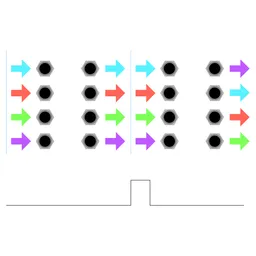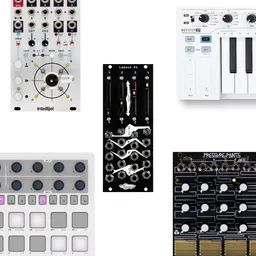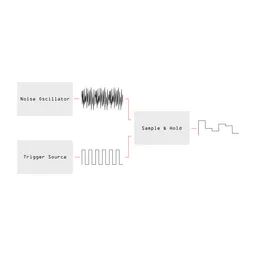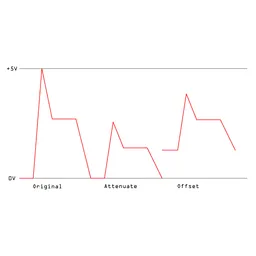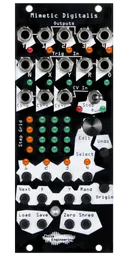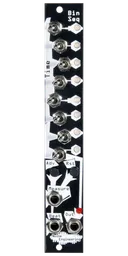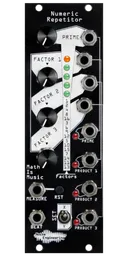Today, we continue our Getting Started series with a big, important topic: How does sequencing work in Eurorack? Sequencers run our patches, and in some ways they’ll be the most important modules in our system. In this article, we’ll talk about what sequencers do, how to get started with them in your patches, and go over an advanced topic and some module suggestions at the end.
What is a sequencer?
One of the reasons people tell us they find modular synths daunting is that they don’t know where to begin. With a more “traditional” instrument, making sounds can be intuitive. If we think of a piano, we know that when we press a key, we hear a note. And a song is “just” us pressing a series of keys (or strumming strings or whatever your preferred analogy is) in a specific order at specific times. With an unpatched modular synthesizer, there’s nothing you can press to make your song happen. It may not even be obvious what to press to make a note happen.

This is where sequencers come in. They can act as a way to tell your modules that it’s time to do something and what exactly it is time to do.
Sequencers aren’t unique to Eurorack at all: if you’ve used another synthesizer or the sequencer in your DAW (or even an old-school rack-mount sequencer), you know what the concept is. Although sequencers come in a variety of shapes and sizes — they’re used for a plethora of tasks and as a result can have a huge variety of different features from module to module — they all have a simple goal: to make things happen in time.
Put another way, if we think of our synth voice as a piano, the sequencer is the performer playing it. Sequencers are the things telling your module when to play a note AND which note to hit.
Rhythm and timing
Let’s go back to that piano analogy: each time we play a note on the piano, we control when it starts and when it ends by holding a key down for a certain amount of time. A sequencer does this by outputting gates that are patched into other modules. Gates can control the timing of a note created by a voice in our system. Many voices respond to gates just like a piano key does: while the gate is high (piano key is pressed), the note plays, and when the gate goes low (piano key is released), the note stops.
Some voices, like those designed to emulate percussive instruments, don’t care about how long a gate is – they only need a trigger at the input, so we only sequence their rhythm, instead of their note length. You can read about the difference between gates and triggers in our blog post on the subject.

Notes and CV
While controlling the length and timing of a note is, of course, very important, it’s only half of a note. We also may need to control its pitch! In Eurorack, timing control and pitch are separate.
Pitch is manipulated with control voltage. Many pitch sequencers output quantized pitch CV, which means that CV will always be a fixed value following the one volt per octave standard – basically, they help keep your notes in tune.

Because timing and pitch of notes are sequenced separately in Eurorack, the gates and CVs in our sequences can come from different places. That’s a more advanced patch technique, but it can be quite useful for generative patches, or just combining multiple sequencer workflows.
Clock
Most sequencers have some type of clock input and/or output. Some larger sequencers have clocks built in (but still may have an optional clock input), and others require a clock input to do anything. As with any module, be sure you know what you are getting and that you are getting the module(s) you need with it: there’s nothing sadder than getting your new toy home and not being able to use it! When in doubt, read the manual and ask questions.
You can learn more about clocks and resets in our Getting Started post on that topic, but as you create more complex patches, you may have multiple clocked devices patched together and working in harmony (or chaos, depending on your preferred musical stylings). The more you have working together, the more likely you are to need clock and reset signals to keep your sequencers and patch as a whole in time and in phase.
Let’s sequence!
Once we have a sequencer, how do we go about creating music? The exact workflow and outputs of your sequencer will vary from module to module, but a few general principles apply to most any setup.
I like to start by patching a few voices: my main sequencer can control up to 6 voices, but I like to start simple with some percussion. Once I program a kick pattern I like, then I’ll move on to, perhaps, some snares and hats, and then add a melodic voice and program a melody. Once I have a setup like this, I’ll figure out what I want to do next: perhaps I want to add another melodic voice for some harmony, or more percussion, or some sound effects. Or, I can use another CV channel from my sequencer to change the timbre of a voice – remember, CV can be used for pretty much anything, so we can sequence parameter changes, filters, wavefolders, envelope times… anything with a CV input.
Creating your first few sequences and patches can be intimidating, but like anything in music, it just takes practice. Plugging some stuff in and seeing what happens is the best way to learn modular!
Do I need a sequencer for every module in my case?
Maybe?
Okay probably not. But as your module collection grows, you’ll probably see your sequencing capacity grow too. While the tactile side of tweaking the knobs is really fun, there’s also something really gratifying (and repeatable) about using sequencers. As you get to know your case, you’ll learn what you like to set and forget and what you like to automate a bit. It may change depending on your mood, patch, genre you’re going for that day…But having a variety of sequencers and types of sequencers at your disposal will probably be handy.

Sequencers, sequencers, and more sequencers.
A note (hah) on MIDI
MIDI has been becoming more and more of a player in Eurorack systems. Some sequencers use MIDI for clocking, eliminating the need for clock and reset signals.
If you use a DAW or another MIDI-capable device, MIDI-to-CV devices exist that can create gates, triggers, pitch CV, and more from MIDI data. This can be a good alternative (and compact with lots of bang for your buck) solution to a full-fledged sequencer module if you’d like to run your Eurorack system from a DAW, or a MIDI sequencer in your setup.
For advanced patchers: sequencing sequencers
One of my absolute favorite things to do in Eurorack is use multiple sequencers in series, or use a sequencer to sequence another sequencer. It sounds more meta than it is! Using multiple sequencers in series allows for some interesting complexity, especially when using relatively simple sequencers like Bin Seq. I often use my Bin Seq on a relatively slow clock division to advance a Mimetic Digitalis. The four CV outputs of MD can create big changes in a patch, and I can easily change when and how often those changes happen with BS.
I also like pairing Bin Seq with Vox Digitalis: by multing BS’s gate output to a voice and to the clock input on VD, VD only advances when a new gate comes out of BS.
Looking for modules?
Here are just a few modules that can perform some of the functions we've been chatting about. There are always lots of choices in modular!
XOR Electronics NerdSeq: An advanced sequencer with lots of outputs and a tracker-style interface.
Noise Engineering Mimetic Digitalis: A performance-oriented four-channel CV sequencer.
Make Noise René: Three-channel gate and CV sequencer with lots of creative sequencing options.
Mutable Instruments Marbles: A sequencer that creates its own sequences with controllable randomization.
Doepfer A-155: A traditional analog CV and trigger/gate sequencer.
TipTop Circadian Rhythms: A fun to use 8-channel trigger sequencer.
